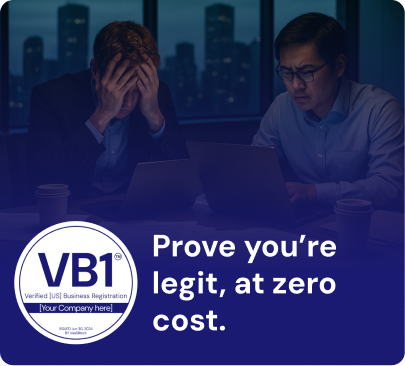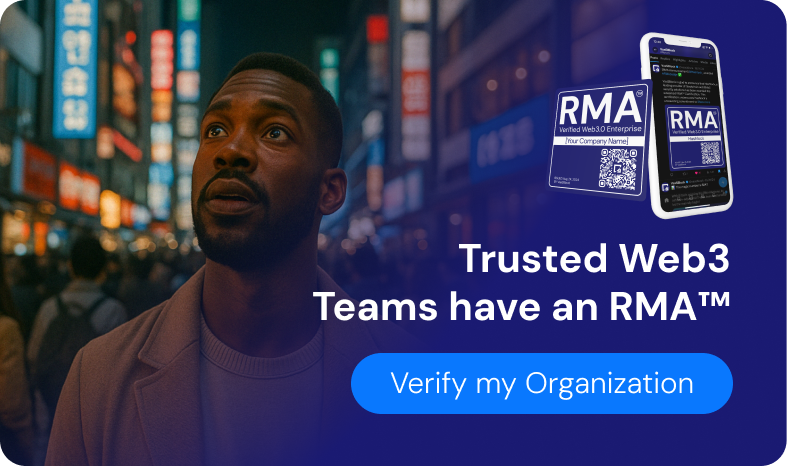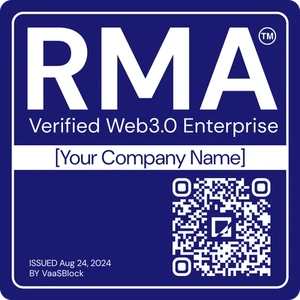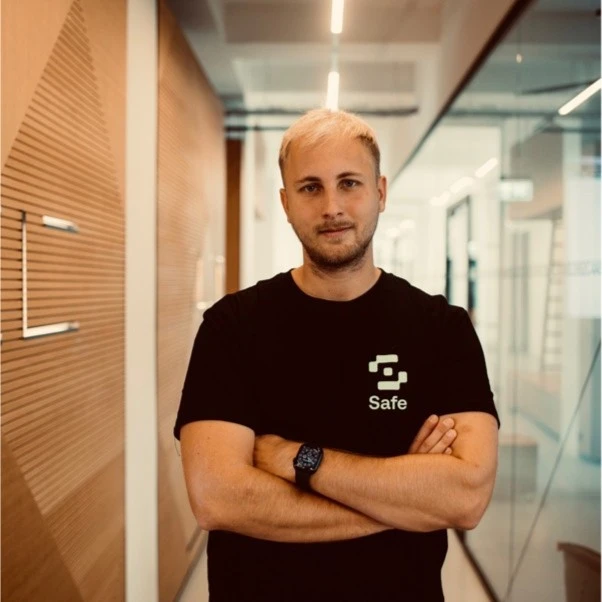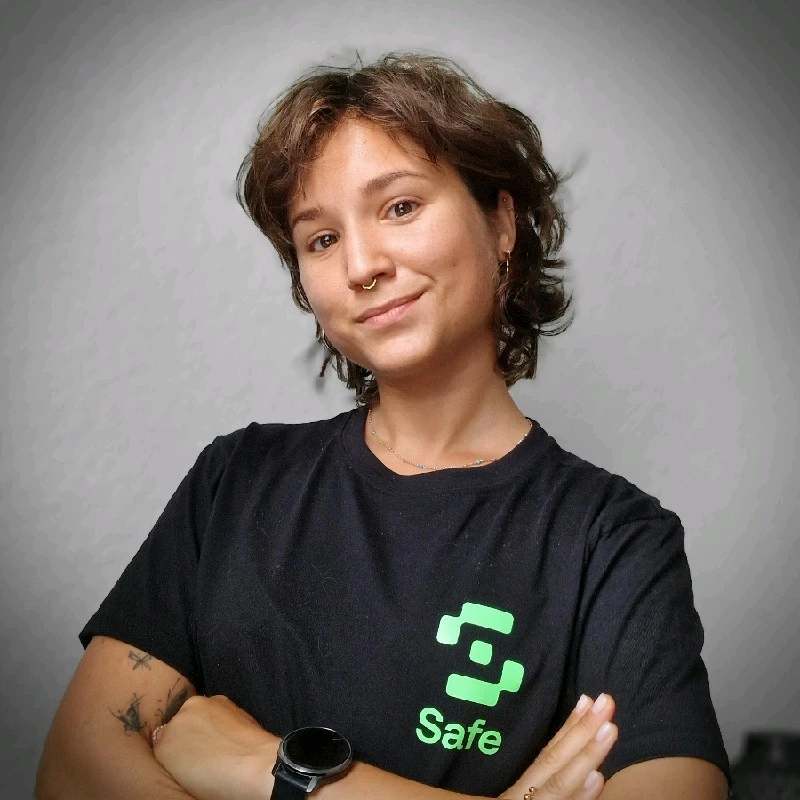
Safe
Risk Management
?Risk Management
The RMA™ is a blockchain credibility certification assessing governance, transparency, security, and results, providing trusted verification for businesses in Web3.
VaaSBlock has not audited this project and cannot vouch for this organization.
RMA™ Status: ❌ Unverified
Verification of 6 major compliance criteria.
Technology
?Technology
A collection of public facing information, data collected through partners and our own tools view we present a projects technology in one place for easy verification.
Analysis and testing of tech infrastructures.
Marketing
Alpha?Marketing
Top level look at a projects marketing capablities currently in alpha this section will grow to show quickly how a project promotes itself and the effectiveness.
Screening of user base and community feedback.
Background
?Background
Using multiple public facing sources across the web view a summary of a projects purpose, key achievements and general overview.
Collection of basic administrative documentation.
Risk Management
Last Updated
2025/4/16
Transparency
Transparency Score
Algorithmic assessment of a project’s transparency level, using multiple public data points to measure its commitment to compliance, documentation, and clarity in communication.
Transparency Score
Category Rank
A ranking that positions the organization among its industry peers, evaluating its relative performance based on key compliance, credibility, and transparency indicators.
Category Rank
Safe vs Security & Identity
VaaSBlock Rank
A global ranking that compares the organization against all entities listed on VaaSBlock, reflecting its overall credibility, transparency, and operational performance versus the full Web3 ecosystem.
VaaSBlock Rank
Safe vs All Listed Organizations
Transparency
Transparency Score
Transparency Score
Algorithmic assessment of a project’s transparency level, using multiple public data points to measure its commitment to compliance, documentation, and clarity in communication.
Category Rank
Safe vs Security & Identity
Category Rank
A ranking that positions the organization among its industry peers, evaluating its relative performance based on key compliance, credibility, and transparency indicators.
VaaSBlock Rank
Safe vs All Listed Organizations
VaaSBlock Rank
A global ranking that compares the organization against all entities listed on VaaSBlock, reflecting its overall credibility, transparency, and operational performance versus the full Web3 ecosystem.
RMA™
✘ UnverifiedCorporate Governance
The verification of fundamental governance, organizational structure, including verifying the entity’s legal registration and adherence to local laws and regulations.
Corporate
Governance

Team Proficency
Evaluation of an organization’s personnel, ensuring that crucial team members possess the expertise and dedication necessary to execute current business models and scale effectively.
Team
Proficiency

Technology & Security
Assessment of the organization’s technological framework, including blockchain integrations (where relevant), system architecture, and overall IT infrastructure.
Technology
& Security

Revenue Model
Comprehensively evaluation of a company’s income-generating strategies (how do they make or intend to make money), ensuring financial robustness and sustainability.
Revenue
Model

Results Delivered
The Results Delivered component of the RMA™ audit comprehensively evaluates an organization’s ability to achieve its goals and honor its commitments.
Results
Delivered

Planning & Transparency
The Planning and Transparency component of the RMA™ audit offers a thorough assessment of how an organization manages its workflow and prepares for unexpected challenges.
Planning &
Transparency

Technology
Marketing
Marketing Effectiveness
This score assesses the impact of detected marketing activity and the corresponding price movement of a token. The score understands whole market movements to ensure tokens are assessed fairly against peers.
Marketing Effectiveness
Confidence Index
This index determines our confidence in the score we have given. Generally, as more data is collected, the confidence index will increase. If a project has lots of activity, this confidence is earned faster.
Confidence Index
VaaSBlock Rank
This identifies where a project sits compared to all projects accessed for Marketing Effectiveness.
VaaSBlock Rank
Safe vs All Listed Organizations
Marketing Effectiveness
Marketing Effectiveness
This score assesses the impact of detected marketing activity and the corresponding price movement of a token. The score understands whole market movements to ensure tokens are assessed fairly against peers.
Confidence Index
Confidence Index
This index determines our confidence in the score we have given. Generally, as more data is collected, the confidence index will increase. If a project has lots of activity, this confidence is earned faster.
VaaSBlock Rank
Safe vs All Listed Organizations
VaaSBlock Rank
This identifies where a project sits compared to all projects accessed for Marketing Effectiveness.
No Chain No Gain™ Podcast ⛉
This Organization is yet to join the No Chain No Gain™ Podcast and share insights on what makes their business trustable and innovative.
💡 NCNG generated over 1 Million impressions in its first six months of existence.
PR Impact
PR Impact
VaaSBlock provides estimations to the impact that traditional digital media can have on a project. This is an early release; more areas of PR are planned in future versions.
Search Terms ? Search TermsThese are the terms we discovered the article for on page one of Google. | Est. Traffic ? Estimated TrafficWe estimate how much traffic an article will get. Generally, our estimations are slightly higher than those of more established tools. We are working on the algorithm all the time, and results could change. | Est. Value ? Estimated ValueBased on the estimated traffic we generate an estimation for what this traffic would have cost to generate if you tried to target these users with ads. The positions for the article on google and the location of the traffic are the major factors in this estimation. | |||
|---|---|---|---|---|---|
Leibniz Institute for Financial Research SAFE source: safe-frankfurt.de | Leibniz Institute fo… — Leibniz Institute for Financial Research SAFE source: safe-frankfurt.de | Organic | safe-frankfurt.de | ||
Scaled Agile Framework (SAFe) Values & Principles | Atlassian source: Atlassian | Scaled Agile Framewo… — Scaled Agile Framework (SAFe) Values & Principles | Atlassian source: Atlassian | Organic | atlassian.com | ||
Was ist eigentlich SAFe®? source: Sohrab Salimi | Was ist eigentlich S… — Was ist eigentlich SAFe®? source: Sohrab Salimi | Organic | agile-academy.com | ||
SAFE Albumfabrik Sammelsysteme seit source: safe-album.de | SAFE Albumfabrik Sam… — SAFE Albumfabrik Sammelsysteme seit source: safe-album.de | Organic | safe-album.de |
| Est. Traffic | Est. Value | ||
|---|---|---|---|
Leibniz Institute fo… — | |||
Scaled Agile Framewo… — | |||
Was ist eigentlich S… — | |||
SAFE Albumfabrik Sam… — |
Ratings
AlphaOverall
Aggregated Rating
The combined score with AI-driven weighted analysis to provide the best possible project rating.
3905 verifications
Confidence Index
This index determines our confidence in the score we have given. Generally, as more data is collected, the confidence index will increase. If a project has lots of activity, this confidence is earned faster.
Low
3905 verifications
External Reviews
Background
Organization Name – Safe
Category – 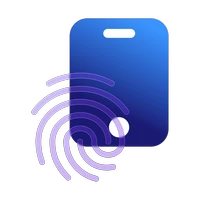 Security & Identity
Security & Identity
About
powered by irmaAI
irmaAISafe, formerly known as Gnosis Safe, is a pioneering smart account infrastructure that has redefined digital asset management on Ethereum and other EVM-compatible networks. Launched in 2018, Safe emer…ged from Gnosis as a secure, modular, and programmable alternative to traditional externally owned accounts (EOAs). EOAs rely on a single private key, posing risks of loss or theft, whereas Safe’s smart accounts utilize smart contracts to enable advanced features like multi-signature authorization, transaction batching, and customizable access controls.   
At the core of Safe’s architecture is the Safe Smart Account, a modular and extensible smart contract account designed to serve as the standard core utilized in all smart contract-based wallets and applications. These accounts support modules that execute transactions using alternative access patterns, allowing for complex execution logic and fine-grained access management. For instance, users can define modules that facilitate account recovery under specific circumstances or set daily transaction limits for certain operations. This flexibility ensures that Safe Smart Accounts can adapt to various user needs, from individual users to large organizations.   
Safe’s commitment to security is evident in its rigorous auditing and formal verification processes. Since its inception, Safe’s smart contracts have passed the highest possible security standards in the industry, including formal verification. The platform has also established a $1 million bug bounty program to incentivize the discovery and reporting of potential vulnerabilities. As a result, Safe has become the most trusted smart account wallet on Ethereum, securing over $100 billion in assets across more than 8 million smart accounts deployed on over 100 EVM networks.  
To facilitate user interaction with Safe Smart Accounts, the platform offers Safe{Wallet}, a user-friendly interface that allows individuals and organizations to manage their digital assets securely. Safe{Wallet} supports features like counterfactual deployment, transaction simulation, risk assessment, and social recovery, making it accessible to both novice and experienced users. The wallet is open-source and operates under the GNU General Public License, Version 3, ensuring transparency and community-driven development.  
Developers can leverage Safe{Core}, an open-source and modular account abstraction stack that provides essential tooling and infrastructure for integrating Safe Smart Accounts into digital platforms. Safe{Core} includes a Software Development Kit (SDK) and Application Programming Interface (API) that abstract the complexity of operating smart contract accounts, enabling developers to build secure and flexible applications with ease. The SDK offers features like multi-factor authentication, secure account recovery, and seamless integration with existing ecosystem tools. 
Recognizing the challenges of liquidity fragmentation and cross-chain transactions in decentralized finance (DeFi), Safe introduced Safenet in December 2024. Safenet is a decentralized transaction processor network designed to scale DeFi and move the $100 trillion global economy onchain by solving liquidity fragmentation and enabling instant, secure cross-chain transactions. Unlike traditional blockchains or Layer 2 solutions, Safenet operates as a transaction processing network that works on top of any existing or future chain, connecting on-chain and off-chain networks like Visa and centralized exchanges.  
Safenet’s architecture comprises Processors and a Liquidity Network. Processors act as execution nodes, issuing resource-locks on user accounts to ensure asset availability, executing user transactions using external liquidity, and providing execution guarantees, including security checks and user-defined policies. The Liquidity Network aggregates existing DeFi primitives like decentralized exchanges, lending markets, and other liquidity sources to provide the required liquidity for Processors to service users. This design enables users to transact across blockchains with unprecedented speed and security, without needing to worry about the underlying infrastructure.   
To ensure the security and decentralization of Safenet, the SAFE token underpins its economic model. Processors and validators must stake SAFE tokens to participate in the network, aligning incentives across the ecosystem. Validators monitor the activity of processors and can trigger challenges if any transactions are triggered maliciously or not in compliance with user-set policies. This staking mechanism ensures that faulty actions within Safenet can be flagged with higher confidence, enhancing the network’s overall security. 
Governance of the Safe ecosystem is managed by SafeDAO, a decentralized autonomous organization that oversees the development and direction of the platform. SAFE token holders can participate in governance votes to shape the future of Safe, including proposed features, upgrades, and partnerships. The SAFE token allocation is meticulously organized to balance the interests of different community members, with a circulation cap set at 1 billion SAFE tokens and a timeline for complete distribution targeted for 2030. 
Safe’s vision extends beyond digital asset management to encompass the broader concept of digital ownership. By building universal and open contract standards for the custody of digital assets, data, and identity, Safe aims to bring digital ownership of accounts to everyone. This mission is supported by the Safe Ecosystem Foundation, a non-profit organization based in Zug, Switzerland, that helps educate people about Safe smart accounts and promotes Safe technology through grants and other forms of funding.  
In summary, Safe has established itself as a critical infrastructure in the Ethereum ecosystem, providing secure, flexible, and user-friendly solutions for digital asset management. Through its innovative smart account architecture, developer tools, and commitment to decentralization, Safe is paving the way for a future where digital ownership is accessible to all.  Read More
Creation Date
November 2025
Headquarters
Zug, Switzerland
Organization Maturity Level
Growing Business
RMA™ Type
–
Notable Achievements
2017
Gnosis Multi-Sig Wallet launched
2022
Safe spun off as independent project
2022
$100M funding round
2024
Surpassed $100B in assets secured
- vaasblock.com /
- Security & Identity /
- Safe


